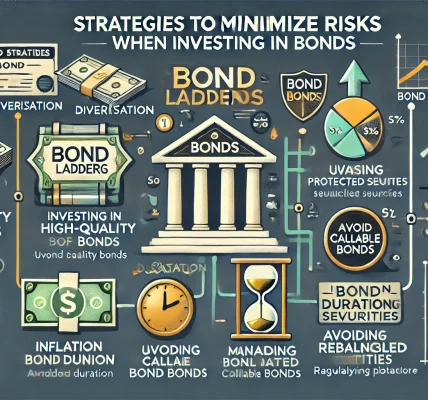Introduction
Investing in bonds online has never been easier. With digital platforms offering seamless access to a variety of bonds, investors can now build a diversified bond portfolio from the comfort of their homes. Whether you are a beginner or an experienced investor, this guide will walk you through the entire process, helping you make informed decisions and avoid common pitfalls.
In this article, we will explore the benefits of online bond investing, key steps to follow, potential risks, and best practices to ensure a smooth investment journey.
Why Invest in Bonds Online?
Investing in bonds online offers several advantages, including:
✅ Convenience: Buy and sell bonds anytime, anywhere.
✅ Variety: Access government bonds, corporate bonds, municipal bonds, and more.
✅ Lower Costs: Many online platforms offer competitive fees compared to traditional brokers.
✅ Real-Time Access: Monitor bond prices, interest rates, and portfolio performance in real-time.
✅ Transparency: Online platforms provide detailed information about bond issuers, credit ratings, and historical performance.
Now that we understand the benefits, let’s dive into the step-by-step process of investing in bonds online.
Step 1: Understand the Different Types of Bonds
Before you start investing, it’s essential to understand the different types of bonds available online:
- Government Bonds – Issued by governments (e.g., U.S. Treasury Bonds, Indian Government Bonds) and considered low-risk.
- Corporate Bonds – Issued by companies to raise capital. Higher returns but also higher risk.
- Municipal Bonds – Issued by local governments for infrastructure projects. Often tax-free.
- Zero-Coupon Bonds – Sold at a discount and redeemed at face value upon maturity.
- Inflation-Linked Bonds – Designed to protect against rising inflation.
- High-Yield (Junk) Bonds – Higher risk but offer better returns.
Each bond type has its own risk-reward profile. Choose the one that aligns with your financial goals.
Step 2: Choose an Online Bond Investment Platform
To invest in bonds online, you need to select a reliable and regulated bond trading platform. Some popular options include:
🔹 Brokerage Firms: Fidelity, Charles Schwab, TD Ameritrade, E-Trade
🔹 Government Websites: U.S. TreasuryDirect, RBI Retail Direct (India)
🔹 Bond Marketplaces: Interactive Brokers, BondsIndia, BondEvalue
🔹 Bank Investment Platforms: Many banks offer online bond investment services.
How to Choose the Right Platform?
✅ Ensure the platform is registered with regulatory authorities (e.g., SEC, FINRA, RBI).
✅ Compare fees, commissions, and transaction charges.
✅ Check if they offer diverse bond options.
✅ Look for educational resources to help beginners.
✅ Read customer reviews and ensure the platform has good customer support.
Step 3: Open an Investment Account
Once you’ve selected a platform, you’ll need to open an investment account. Follow these steps:
- Register Online – Provide personal details such as name, email, phone number, and address.
- Verify Your Identity – Submit documents like passport, driver’s license, or Aadhaar card (for India).
- Link a Bank Account – Add your bank details for deposits and withdrawals.
- Fund Your Account – Transfer money to your investment account to start trading.
Most platforms complete the account setup within 24-48 hours.
Step 4: Research and Select Bonds to Invest In
Now that your account is set up, it’s time to research and select the right bonds. Here’s what to consider:
📌 Bond Rating: Check credit ratings from agencies like Moody’s, S&P, and Fitch to assess risk. (AAA is the highest, D is default). 📌 Interest Rate (Coupon Rate): Higher rates offer better returns but may carry more risk. 📌 Maturity Date: Choose short-term, medium-term, or long-term bonds based on your investment horizon. 📌 Yield to Maturity (YTM): This tells you the total return you will earn if you hold the bond until maturity. 📌 Issuer’s Financial Health: Government bonds are safer than corporate bonds, but corporate bonds may offer higher returns.
Platforms often have filters and comparison tools to make bond selection easier.
Step 5: Execute Your Bond Purchase
Once you’ve selected a bond, follow these steps to purchase it:
- Log in to your account on the online platform.
- Search for the bond using the ISIN (International Securities Identification Number) or bond name.
- Check the bond details (interest rate, maturity date, YTM, fees, etc.).
- Enter the investment amount (minimum investment varies by bond type).
- Review your order and confirm the purchase.
- Wait for order execution – the bond is now part of your portfolio!
Step 6: Monitor and Manage Your Bond Investments
After purchasing bonds, it’s crucial to track and manage your portfolio:
📊 Check bond prices and yields regularly – Bond values fluctuate with interest rate changes.
📊 Reinvest interest payments – If you own coupon bonds, consider reinvesting interest for compound growth.
📊 Diversify your portfolio – Don’t put all your money into one bond type; spread across government, corporate, and municipal bonds.
📊 Stay updated on market trends – Follow economic news, inflation trends, and central bank policies.
📊 Consider selling if needed – If market conditions change, you can sell bonds before maturity.
Potential Risks of Investing in Bonds Online
⚠ Interest Rate Risk: Rising interest rates reduce bond prices.
⚠ Credit Risk: Corporate bonds carry a risk of default.
⚠ Liquidity Risk: Some bonds may be difficult to sell before maturity.
⚠ Inflation Risk: Fixed-rate bonds may lose value if inflation rises.
To mitigate risks, diversify your investments and choose bonds with high credit ratings.
Conclusion
Investing in bonds online is a convenient, efficient, and cost-effective way to grow your wealth. By following this step-by-step guide, you can confidently select the right bonds, make informed investment decisions, and manage your portfolio effectively.
Key Takeaways:
✔ Choose a reliable bond investment platform.
✔ Understand different bond types and risk factors.
✔ Research bonds carefully before investing.
✔ Regularly monitor and rebalance your bond portfolio.
✔ Invest through tax-advantaged accounts to maximize returns.
By applying these strategies, you can successfully build a stable and diversified bond investment portfolio online.




